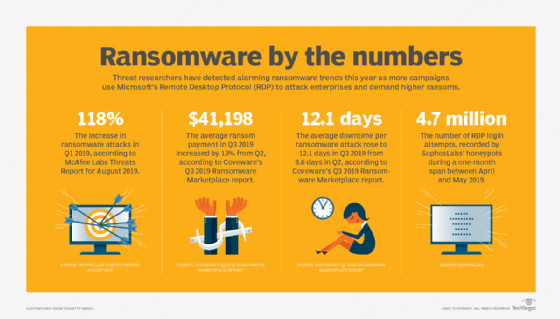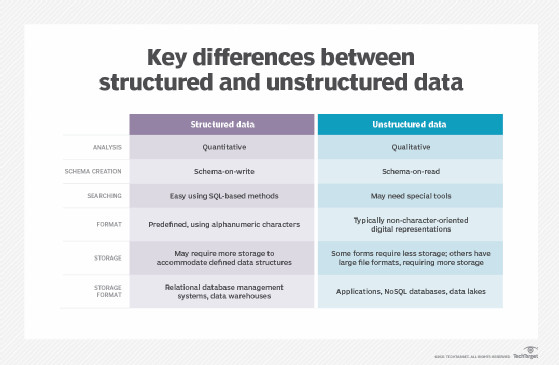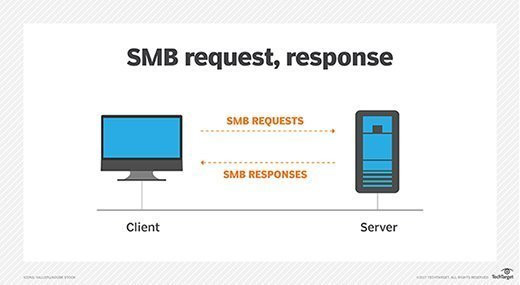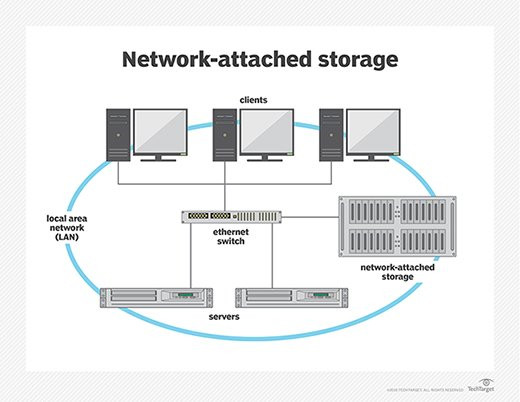In today’s interconnected world, seamless data sharing is the backbone of efficient operations for businesses and individuals alike. A File Server stands as a cornerstone of this connectivity, acting as a dedicated computer responsible for the centralized storage and streamlined management of data files. This enables multiple computers within the same network to readily access and share these files without the cumbersome process of physical transfers.
Essentially, a file server functions as a specialized server, designed to house and distribute data blobs to client devices. It creates a unified and accessible location for storing and sharing files across a network. These networks can range from localized setups within an office, known as a Local Area Network (LAN), to broader access points extending across the internet.
The implementation of file servers significantly simplifies the processes of storing, securing, and sharing files within any organization. By centralizing data, file servers enhance collaboration and data accessibility. However, their critical role in data storage also makes them prime targets for cyber threats, including hackers and ransomware attacks. Consequently, robust security measures are paramount to safeguard file servers and the valuable data they hold.
 Ransomware attacks targeting file servers
Ransomware attacks targeting file servers
For organizations of all sizes, the need to share information and data efficiently is undeniable. File servers offer a streamlined alternative to methods like emailing attachments or using USB drives for data transfer. By providing a central repository, file servers empower teams, regardless of location, to collaborate effectively and facilitate the transfer of large files that might otherwise be challenging to move.
From a simple desktop computer sharing a folder to sophisticated, globally accessible virtual appliances with redundancy, the adaptability of file servers is remarkable. They are, in many respects, fundamental to the smooth operation of most modern businesses.
Delving into the Functionality of File Servers
The primary function of a file server is to provide remote access to a file system for client devices. File servers are versatile in the types of data they can store, accommodating everything from executables and documents to images and videos.
Data on a file server is typically stored as binary data blobs or individual files. Crucially, file servers generally do not perform in-depth indexing or processing of the stored files by default, although additional plugins or server functionalities can be implemented to offer enhanced features.
Unlike databases, which manage structured data and facilitate complex queries, file servers operate on a more fundamental level. They rely on client applications to interact with and interpret the data. This distinction is important: databases are designed for structured data management, while file servers excel at general-purpose file storage and sharing.
 Structured vs unstructured data in file servers
Structured vs unstructured data in file servers
To accommodate multiple users accessing files concurrently, file servers often incorporate several key features:
- Permission Management: This feature allows administrators to define user access levels, controlling who can view, edit, or delete specific files and folders. This ensures data security and prevents unauthorized modifications.
- File Locking: To prevent data corruption and conflicts, file locking mechanisms prevent multiple users from simultaneously editing the same file. This ensures data integrity and version control.
- Conflict Resolution: In situations where file overwriting occurs, conflict resolution systems are in place to maintain data integrity. These systems might use versioning or other strategies to manage discrepancies and prevent data loss.
- Distributed File Systems: For enhanced data availability and redundancy, distributed file systems replicate data across multiple servers in different locations. This architecture ensures high availability and protects against data loss due to hardware failures or disasters.
While offering numerous benefits, it’s important to acknowledge that file servers also come with certain disadvantages, which we will explore later.
File Server Protocols and Programs: Enabling Communication
File servers rely on various protocols to facilitate communication and data access. These protocols differ in their features and client compatibility.
Server Message Block (SMB) stands out as the most prevalent protocol for file servers within LAN environments. SMB enjoys native support in Windows and macOS operating systems, making it a highly accessible and user-friendly option. For Linux and Unix systems, SMB compatibility is achieved through software like Samba or CIFSD (Common Internet File System), an open-source implementation.
The ease of setup and administration is a significant advantage of SMB. It can also integrate seamlessly with Microsoft Active Directory for centralized authentication and user management.
Over time, SMB has evolved through three major versions: SMB1, SMB2, and SMB3. It’s crucial to note that SMB1 is now considered insecure and should be avoided in favor of the more secure and efficient SMB2 or SMB3.
Network File System (NFS) is another prominent protocol, primarily favored in Linux and Unix environments. While less common for end-user file servers in typical office settings, NFS is frequently used for server-to-server file access and in development environments.
File Transfer Protocol (FTP) and Secure FTP (SFTP) are protocols specifically designed for file transfers over the internet. FTP is generally used for downloading and uploading files but isn’t optimized for clients directly executing data from the remote file system. Popular FTP server software examples include FileZilla and Microsoft Internet Information Services (IIS). SFTP provides a secure alternative to FTP by encrypting data transmissions.
 How SMB Protocol works in file servers
How SMB Protocol works in file servers
SMB, along with NFS, FTP, and SFTP, are key examples of protocols that empower file servers to make data accessible to a wide range of client devices and operating systems.
Fortifying File Server Security: Protecting Critical Data
File servers often house the most sensitive and critical data within an organization, making their security paramount. Data loss from a file server outage or breach can have severe repercussions for any business. Therefore, robust security measures are essential to protect file servers from failures, disasters, cyberattacks, and ransomware threats.
Backups are the cornerstone of file server security and data resilience. Implementing a comprehensive backup strategy ensures that data remains accessible and recoverable in the event of hardware failures or cyberattacks.
Best practices dictate maintaining multiple copies of critical data, with some copies stored at geographically separate locations and offline or isolated from the primary network. This multi-layered approach ensures data recovery even in catastrophic scenarios like data center disasters or ransomware encryption. Regularly testing file backups is also crucial to validate their effectiveness and ensure a smooth recovery process when needed.
File servers, being high-value targets for attackers, should be isolated from direct internet exposure whenever possible. Regular audits of file permissions are necessary to identify and rectify any vulnerabilities. Keeping file server software and operating systems up-to-date with the latest security patches is also vital to mitigate known exploits. Implementing monitoring and alerting systems to detect unusual activity can help proactively prevent file exfiltration or ransomware attacks.
File Servers vs. NAS vs. Cloud Storage: Choosing the Right Solution
Storing and collaborating on files are fundamental requirements for virtually every business. While file servers represent a foundational approach to meeting these needs, alternative solutions like Network-Attached Storage (NAS) and cloud storage offer different trade-offs and benefits.
Network-Attached Storage (NAS) devices are dedicated hardware solutions designed specifically for file serving. They integrate storage and networking capabilities into a single appliance. NAS devices are available in a wide range of configurations, from compact desktop units for small offices to large-scale servers capable of holding petabytes of data. High-end NAS systems can be customized for high capacity or high-speed access, accommodating numerous users simultaneously accessing large files like videos. Some NAS devices can also function as direct-attached storage (DAS), providing dedicated storage for other servers.
 Network-attached storage (NAS) in file sharing
Network-attached storage (NAS) in file sharing
Cloud storage services, offered by providers like Dropbox, OneDrive, and Box, have gained significant traction for business file storage. These services offer automatic synchronization, robust security features, and automated backups. Their ease of use and accessibility make them particularly appealing to small and medium-sized businesses. However, for large organizations or those dealing with substantial data volumes or large files like videos, cloud storage can become more expensive and potentially complex to manage compared to traditional file servers.
A Document Management System (DMS) represents a specialized type of file server tailored for document storage and management. Platforms like Microsoft SharePoint and DocuWare are popular DMS examples. DMS solutions enhance file servers with features like indexing, advanced search capabilities, and document retention policies. They are particularly well-suited for managing documents like Microsoft Word files, spreadsheets, and PDFs. However, DMS systems may be less optimized for handling unstructured blob data like executables or videos.
Advantages and Disadvantages of File Servers
Adopting file servers offers a distinct set of advantages and disadvantages:
Advantages of a File Server:
- Relatively Low Cost: Compared to some alternatives, setting up and maintaining a file server can be a cost-effective solution, especially for organizations with existing hardware and IT infrastructure.
- Easy to Extend and Customize: File servers offer flexibility in terms of scalability and customization. Organizations can tailor their file server setup to meet specific needs and easily expand storage capacity as required.
- High Capacity Potential: File servers can be configured to provide vast storage capacities, making them suitable for organizations with large data storage requirements.
- High Performance Capabilities: With appropriate hardware and network configurations, file servers can deliver high-performance file access and transfer speeds.
Disadvantages of a File Server:
- Requires Administration: File servers necessitate ongoing administration, including setup, maintenance, security updates, user management, and troubleshooting. This typically requires dedicated IT staff or expertise.
- Security Responsibilities: Organizations are directly responsible for securing their file servers, implementing security measures, and mitigating potential threats. This requires vigilance and proactive security management.
- Limited Built-in Metadata and File Manipulation: Basic file servers often have limited built-in capabilities for metadata management and advanced file manipulation compared to more sophisticated systems like DMS.
- Capacity Planning Needs: Organizations need to proactively plan for future storage capacity needs and budget for hardware upgrades or expansions to accommodate growing data volumes.
By carefully weighing these advantages and disadvantages, organizations can make informed decisions about whether a file server, NAS, cloud storage, or a DMS solution best aligns with their specific needs and priorities for network file sharing and data management.
